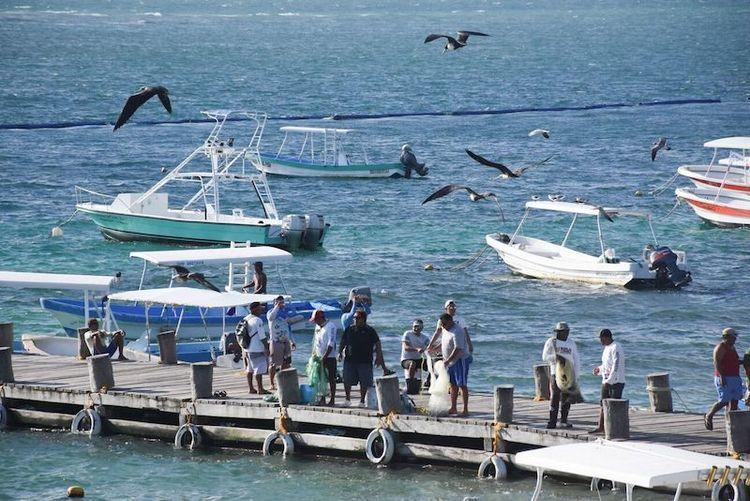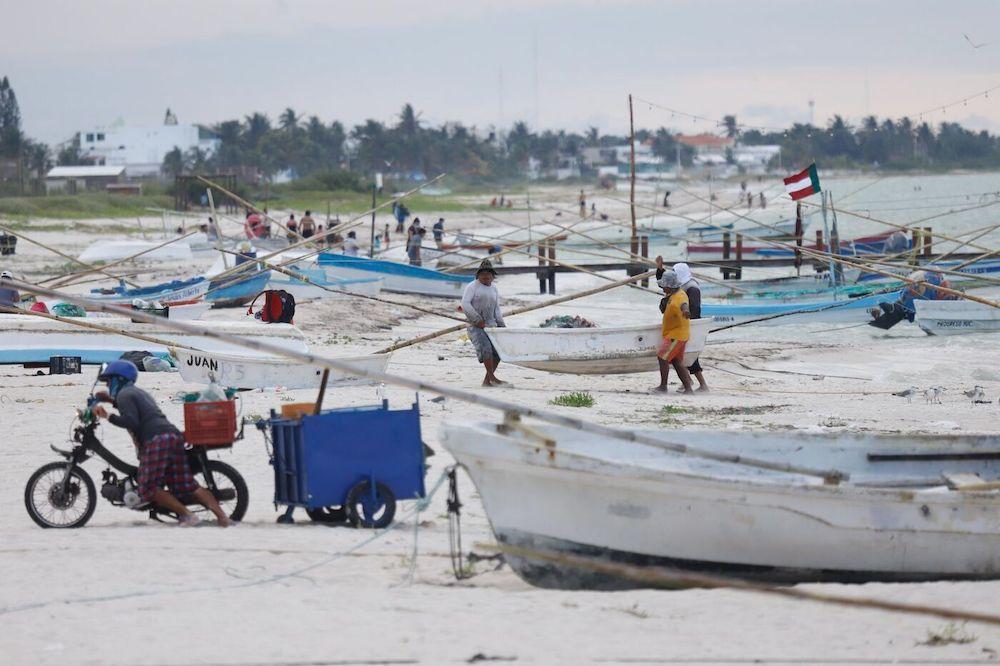Over the past four years, complaints of the theft of boats and engines from coastal fishermen and tourist cooperatives in Quintana Roo have generated 43 research kits, according to data from the State Attorney General's Office provided through transparency.
The figure represents 47% of the total number of investigations opened for this crime in the 7 coastal states where it is registered, according to a series of requests for information from the 17 entities with the sea. After Quintana Roo, Baja California Sur follows with 24 folders; Guerrero with 7; Baja California with 5; Oaxaca with 5; Jalisco with 4, and Michoacán with 3.
“We believe that the theft is happening because cases are never solved. Even if the complaints are made, they remain in the investigation folder. And at least here, in Tulum, none have been resolved,” said José Zunun, secretary of the Tulum Fishermen's Cooperative Fisheries Production Society.
Despite the incidence of robberies in the state, Zunun said, in Tulum cases are less frequent than in places like Cancun and Playa del Carmen, where they can be attacked by land or sea.
“There are fellow fishermen (in these cities) who steal everything. Everything. In Tulum it is a little more protected because it is located inside the National Park, so at least there is control of who enters and who leaves,” he added.
However, there are also cases of theft that do not become research kits and, in other cases, no complaints are filed either.
An example is the state of Campeche, where earlier this year fishermen from the San Román and Lerma docks reported to local media that more than 500 engines had been stolen from them over the past 10 years.
For this CN Journalism publication, the Attorney General's Office of the State of Campeche, as well as all coastal entities in the country, was asked for the number of files opened for the theft of boats and engines. But the agency noted that there are no investigations for this cause.
“In the period from 2018 to 2022, no research kit has been initiated,” said the Campeche Public Prosecutor's Office. This response is repeated in the states of Veracruz, Yucatán, Chiapas, Sinaloa and Sonora.
In the case of Colima, Tamaulipas and Nayarit, no information was provided. While Tabasco only gave the figures from the Executive Secretariat of the National Public Security System (SESNSP) with the total number of thefts in the entity, without specifying those related to the fishing sector.

Only 7 of the 17 coastal states report information about theft from fishermen since 2018. Photo: Elizabeth Ruiz/cuartoscuro.com
Those responsible and the measures
Regarding those responsible for the robberies, José Zunun points out that in the region there are known boats that arrive without registration, as well as people from other places such as Playa del Carmen.
“Yes, there is a Port Authority that is responsible for regulating and seeing how many vessels there are and which cooperatives they belong to. But we don't go any further to find out if the person has an engine or a stolen boat, for example,” explains Zunun.
In addition, the lack of budget in environmental and fisheries agencies has led to a decrease in inspection and surveillance activities throughout the country.
In October 2021, the Organic Law of the Mexican Navy came into force, giving powers to the military institution as a coast guard to combat piracy at sea, as well as the theft of boats, fishing gear and fishing products.
While in entities such as Sinaloa, this year the State Congress approved reforms to the Criminal Code to criminalize the theft of shrimp, mojarra, tilapia, oysters and any other product originating from aquaculture and fishing activities. Penalties can range from 2 to 10 years in prison.
However, the results are still a pending issue for the fishing sector, which, in some cases, also deals with criminal groups dedicated to theft, poaching and illegal tourism.
For Tulum's fishermen, an effective practice has been to not leave the engines in the boats. Mainly due to weather factors that can damage the machine, but also as a safety measure.
While tourist cooperatives, which remain less than 100 meters from the shore, are more exposed to theft.



Comentarios (0)